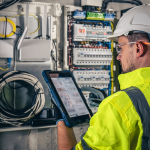In the pursuit of a healthier planet, the need to address the issue of contaminated land has risen to the forefront. As residential areas expand, and the demand for inhabitable land increases, the remediation of contaminated sites becomes more critical. This article will explore various ways to manage and treat contaminated soils with the goal of transforming them into safe living spaces.
Understanding the Risks and Implications of Contaminated Land
Contaminated land poses substantial risks to human health and the environment. The primary source of contamination is usually from human activities such as industrial operations, waste management, and chemical spills. These activities can introduce harmful contaminants into the soil and groundwater.
Also to see : How to Optimize Indoor Air Quality in Real Estate Developments for Healthier Living Spaces?
Exposure to these contaminants can lead to severe health complications. For example, lead contamination can cause neurological disorders, while exposure to benzene, a common industrial solvent, can increase the risk of cancer. In addition, soil contamination can harm the environment by disrupting ecosystems and reducing biodiversity.
Land contamination can also lead to groundwater pollution. As rainwater seeps through contaminated soil, the pollutants can be carried into groundwater sources. This not only poses a risk to human health but also to aquatic life and the overall water quality.
This might interest you : How to Enhance the Attractiveness of Real Estate Properties Using Smart Landscaping Technologies?
Identifying Contaminants and Assessing the Level of Contamination
Before setting out to remediate a contaminated site, it’s essential to thoroughly assess the area and identify the types and levels of contaminants present. This provides valuable information that helps to determine the most effective treatment method.
Soil testing provides a reliable means to identify contaminants. It involves collecting soil samples from various points across the site and analyzing them in a lab. Common contaminants include heavy metals, petroleum products, pesticides, and various chemical compounds.
An environmental site assessment (ESA) can provide a clearer picture of the contamination levels and potential risks. It includes a review of the site’s history, a visual inspection, and the collection and analysis of soil and groundwater samples.
Soil Remediation Methods
There are numerous methods for soil remediation, each with its strengths and weaknesses. The choice of the method largely depends on the type and extent of contamination, as well as the intended use of the land post-remediation.
Bioremediation is a process that uses naturally occurring microorganisms to break down hazardous substances into less toxic or non-toxic substances. This method is eco-friendly and can effectively handle organic contaminants such as petroleum products. However, it’s not suitable for non-biodegradable contaminants such as heavy metals.
Chemical treatment can be an effective solution for non-biodegradable contaminants. This method involves adding reagents to the soil to either immobilize or transform the contaminants into less harmful substances.
Thermal remediation is a process that uses heat to vaporize organic contaminants. The vapor is then collected and treated. This method is highly effective but also quite expensive.
Protecting Groundwater During Remediation
During soil remediation, it’s vital to protect groundwater to prevent further contamination. This could involve installing barriers to prevent contaminants from reaching the water table, or using a pump-and-treat system to remove contaminants from the groundwater.
The pump-and-treat method involves pumping contaminated groundwater to the surface, where it is treated to remove contaminants, and then re-injecting the clean water back into the ground. This method is often used in conjunction with other remediation methods to provide a comprehensive treatment solution.
Monitoring and Maintenance Post-Remediation
Once the remediation process is complete, it’s crucial to monitor the site to ensure the effectiveness of the treatment and to detect any potential re-contamination. This involves regular testing of soil and groundwater and can sometimes require several years to confirm the success of the remediation.
In addition, some remediation methods may require ongoing maintenance. For example, in the case of bioremediation, the introduction of nutrients may be needed periodically to promote the growth of microorganisms.
Through effective remediation and ongoing monitoring, it is entirely feasible to turn a previously contaminated site into a safe, habitable residential area. It’s a complex and rigorous process, but it plays a vital role in protecting our health and the environment.
Holistic Approaches in Soil Remediation
To obtain the best outcome, a holistic approach to soil remediation is necessary. A holistic approach considers all factors affecting the contamination, including physical, biological, and chemical elements. This approach may use a combination of remediation methods to address different contaminants and their varying impacts on the soil and groundwater.
Risk assessment, a critical stage of the holistic approach, helps to understand the potential risks to human health and the environment. During this stage, scientists evaluate the current and future risks posed by the contaminated site. Next, a risk-informed decision-making process helps evaluate the different remediation options and their potential effectiveness, cost, and impacts on the environment.
Natural attenuation, a practice often adopted in the holistic approach, allows nature to take its course in remediating contamination. This practice relies on natural processes, such as bacterial decomposition or chemical transformation, to reduce the concentration and toxicity of pollutants. It’s often used as a low-cost and eco-friendly alternative to more invasive remediation techniques. However, its success is entirely dependent on the nature of the contaminants and the local ecosystem.
The core team involved in site remediation plays a pivotal role in this holistic approach. This team, typically composed of scientists, engineers, environmental consultants, and regulatory agencies, is responsible for overseeing the assessment, planning, and remediation process. Their expertise ensures that the chosen remediation methods are both effective and compliant with environmental regulations.
Converting a Contaminated Site to Residential Use: Challenges and Strategies
Transitioning a contaminated site to residential use presents a unique set of challenges that require strategic planning and intervention. The primary concern is public health. It’s essential to ensure that the remediation process successfully eliminates or reduces hazardous contaminants to safe levels.
The full-scale remediation of a contaminated site for residential use includes steps such as removing polluted soil, treating it off-site, and replacing it with clean soil. If the contamination has spread to the groundwater, more complex techniques like pump-and-treat or natural attenuation may be implemented.
Public participation is a vital part of the process. The local community should be informed about the remediation plans and progress. Open communication builds trust, and feedback from the community can be invaluable in the decision-making process.
Following remediation, several steps ensure the site’s safety for residential use. These include an environmental site assessment to verify the success of the remediation process and regular monitoring to detect any potential recontamination.
Public health is the primary driver of these remediation practices, and the overarching goal is to create a safe and healthy living environment. It’s a challenging and complex process, but with the right team, methods, and meticulous planning, it’s an achievable goal.
In Conclusion: The Path Towards a Healthy Environment
The remediation of contaminated land for residential use is a complex process with numerous challenges. However, the benefits outweigh the difficulties. By transforming these sites, we not only create more living spaces but also contribute to a healthier environment.
Holistic approaches, like risk-informed decision making and natural attenuation, play a significant role in the success of the process. Collaboration between the core team and the public also contributes to the journey towards a healthy environment.
Remediation practices are continuously evolving, thanks to advancements in technology and our growing understanding of soil contamination. This evolution gives us hope for a future where every piece of land, regardless of its past, can provide a safe, healthy, and sustainable living space for us all. With the right approach, determination, and consistent efforts, we can make this a reality.






